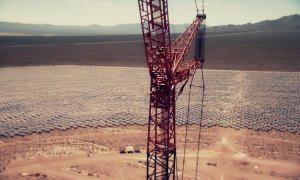
As we continue to follow energy-related developments that impact our members, the rapid growth of hydrogen production is of particular interest, with implications for Boilermaker jobs and the continued use of fossil fuels with carbon capture, use and storage (CCUS).
Estimates of hydrogen’s growth are staggering. ETC, a coalition of energy industry executives, estimates that nearly $15 trillion will be needed by mid century to fund expanded hydrogen capacity. The Green Hydrogen Catapult Initiative, a global consortium of energy developers, predicts a 50-fold increase in green hydrogen over the next six years.
National strategies to get on board with hydrogen are developing quickly. Canada launched its hydrogen strategy in December 2020 and announced its steering committee this past April. In June, the U.S. Department of Energy announced an “Earthshot” initiative for hydrogen advancement. At least nine other nations as well as the European Union have also declared their national strategies.
In many ways, hydrogen is the perfect energy source. It is abundant and can be produced locally using available technology. It can be readily transported and stored. And when combusted, it emits zero greenhouse gases.
In addition, it is versatile and portable with applications for industrial processes, heating, power generation and transportation (via fuel cells).
As nations decarbonize their economies, hydrogen stands out as a very attractive alternative to other energy sources.
The critical debate over hydrogen development is how best to extract it at scale. Almost all of the hydrogen produced in North America today is separated from natural gas and used in petroleum refining to remove sulfur or in fertilizer production involving ammonia. Hydrogen produced in this manner is referred to as “gray,” since the process releases carbon dioxide. Where carbon capture, use and storage technologies have been applied to cut CO2 emissions, hydrogen is referred to as “blue.”
“Green” hydrogen involves a different process altogether—electrolysis. Using water as a feedstock, an electric current is introduced to separate H2O molecules into hydrogen and oxygen. The process is considered green when renewable energy sources (principally wind and solar but potentially nuclear) power the electrolysis.
Some proponents of green hydrogen hold that gray and blue alternatives should be abandoned because of their CO2 emissions (although CCUS can reduce emissions by up to 90%) and assert that continued investments in these processes only promote future fossil fuel use.
Some proponents of gray and blue hydrogen decry the massive amounts of electricity required in electrolysis at scale and the high cost of green hydrogen per unit. Not only would vast arrays of wind and solar be required, but those systems would be dedicated solely to hydrogen extraction and not available for other electricity customers.
Still others see the need for both blue and green hydrogen deployment, arguing that blue hydrogen can serve near-term demand until green hydrogen costs reach blue hydrogen levels, around 2030-2035 by some estimates.
While the hydrogen buildout is often discussed in terms of major capital projects, a third approach (aside from fossil fuel extraction or electrolysis) involves small-scale units extracting hydrogen from recycled biomass using plasma burners.
Dubbed the “greener than green” option, this technology, by the firm SGH2, boasts carbon-negative emissions using paper or vegetation refuse that would otherwise release methane if left to decompose.
The first SGH2 unit is scheduled to become operational in 2023 in Lancaster, California.
In whatever manner the hydrogen future unfolds, whether blue, green or greener than green—or likely some combination of competing technologies—one thing is certain: developers and governments are lining up for a step change in global energy.
Billions, perhaps trillions of dollars in investments will be spent on hydrogen extraction and related infrastructure. Many jobs in power generation, heavy industry, manufacturing, transportation and other sectors will be created.
Boilermaker skill sets in welding, fabrication and other areas could play an important role in the coming hydrogen revolution.
In the oil sands region of Alberta and Saskatchewan, where generations of Boilermakers have earned a living, the hydrogen revolution is already at play. An alliance of oil firms there will replace natural gas with hydrogen to produce steam for bitumen processing. CO2 emissions from the hydrogen extraction process will be captured and transported by trunk line to permanent underground storage.
With advances in CCUS and large reserves of natural gas in both Canada and the United States, blue hydrogen production could become a major jobs generator as one leg of the projected hydrogen energy buildout.
See related article by Richard MacIntosh titled, "Canada needs to support its resource sector."




















0 Comments